It’s that time again, folks! That time of year when we gather together in the darkness, light candles to remind us that the winter doesn’t last forever, and, as a symbol of community and generosity, give each other whatever we could find at the 24-hour pharmacy that was the only thing open on the way over here.
Ahh, the holidays.
In the spirit of the season (whatever that means), the editorial team here at The Public Medievalist has gathered our shortlist of items resting at that greatest of intersections: between medievalism and capitalism. Share this with your friends and family, and maybe save yourself from another gift card or leopard-print neck pillow.
Happy Holidays!
Disclosure: The Public Medievalist receives no commission for any purchases you make and has not been paid to advertise any of this merchandise. We just like this stuff.

A Touch of the Arabesque
Alhambra Geometric Tray—$158 (The Arabesque)
The Arabesque is a small business run by wife-and-husband duo Tasneem and Ali Alibhai. Together, they have been making handmade pieces of functional art drawing on medieval Islamic designs since 2015. And even more, they have the academic cred to back up their work: in 2018, Ali received his Ph.D. in Medieval Islamic Civilization, and currently works as a visiting lecturer at the O’Donnell Institute of Art History at the University of Texas, Dallas.
I recently asked them about their business, and Ali wrote about the process:
Tasneem and I thought it would be a great project to share everything we’ve seen, encountered, and researched with a wider audience outside of the academe. The Arabesque was how we started doing that.
Reaching wider audiences with beautiful art—I can get behind that. And don’t be intimidated by the price of the above piece—at their Etsy store they have things at a wide range of price points.
—Paul B. Sturtevant, Editor-in-Chief

Put Your Doodles in a Masterpiece
Gospel of Luke notebook—$12.62/€11.46/£9.83 (Sexy Codicology)
The team at Sexy Codicology work hard to share medieval illuminated manuscripts with the public through their Digitized Medieval Manuscripts app. But instead of just looking at the pretty pictures online, you could take them with you in the form of bags, shirts, notebooks, and phone cases from their RedBubble store! My favorite is this notebook (writers love notebooks. Not for writing in, mind you. Just for having) with the opening of the Gospel of Luke from the Lindisfarne Gospels.
Because the shop is hosted on RedBubble, these items will ship pretty much anywhere, and the delivery times look reasonable.
—Shiloh Carroll, Managing Editor

Doing the Rounds
Birka beads—£4/$4.60 (Tillerman Beads)
I freely admit that all I want for Christmas is bling. Who doesn’t like bling, after all? Even better, medieval(ish) bling!
For a nice touch of colour nothing beats beads. Tillerman Beads has all the beads you could possibly desire, sorted by time period: you can find some polychrome early English beads, or some bold Viking beads to make jewelry for your family and friends. If threading beads is not your thing, you can always pick up a nice bangle. This is where it becomes clear that early dwellers in Britain had never encountered the concept ‘less is more’ – more is definitely more here, ideally with a bit extra on top.
—Kristina Hildebrand, Assistant Editor

Some Dungeons, No Dragons
Planescape: Torment: Enhanced Edition—$19.99 (Steam)
Planescape: Torment is an unusual roleplaying computer game. The weird sibling of the combat focused Icewind Dale and ever popular Baldur’s Gate was released back in 1999, but while it used the same engine it was a very different game. The world was vast and fantastic – with no sign of the standard issue elves, dwarves, or orcs. The story and characters were deep and thoughtful: including a floating skull with something to hide, a celibate succubus, and an animated suit of armour with a grudge. Most importantly, violence usually takes a back seat to discourse and philosophy: you can talk your way out of most confrontations. The heart of the game is about figuring out who the player and their character actually are. The game is a thoughtful exploration of a vast cosmological world which draws heavily on medieval myths, philosophy and religion: source material for the setting includes the Norse sagas, Dante’s The Divine Comedy, and Christian doctrine, as well Jewish, Buddhist and ancient Greek works. The story is one of morality, atonement and possible redemption cast in a very medieval mould. It’s a decent gift for someone into Dragon Age or The Witcher who’s looking for something a bit different.
—Rob Houghton, Games Editor
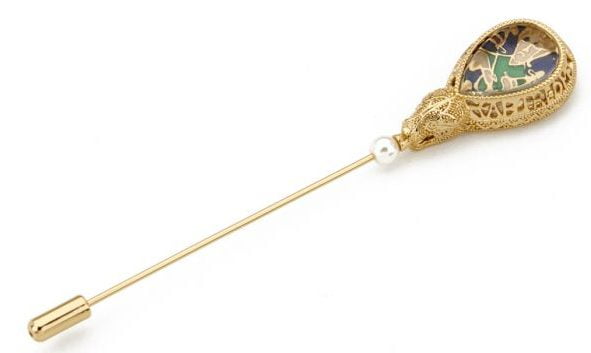
Gettin’ Fancy
Alfred Jewel Stick Pin—£75 (Ashmolean Museum)
As a 21st century man (hey, stop laughing!), I appreciate a nice piece of jewelry as much as the next peacock. But working in museums, I don’t often have much opportunity to get fancy. So when I do, I go hard. And so I was thrilled when my partner got me this Alfred Jewel stick pin from the Ashmolean Museum in Oxford.
At The Public Medievalist we do our best to destroy the popular misconception that says that medieval art is ugly and crude. And if the questions and compliments that I’ve gotten about this piece say anything, it’s helping. For those of you who don’t know, this is modeled off one of the most stunning examples of Early Medieval English artistry—a priceless piece from the 9th century used by King Alfred. I personally think that Alfred’s legacy is a bit overblown. But the man had good taste.
—Paul B. Sturtevant, Editor-in-Chief

Bishops and Kings and Berserkers, Oh My
Lewis chess king—£12.99 (British Museum)
The Lewis chessmen are part of a famous set unearthed in Uig Bay in the Outer Hebrides in 1831. Dated to the 12th century, and presumed Norse in origin, they’re now held by the British Museum, which offers resin (not whale and walrus ivory like the originals, thank goodness) replicas of individual pieces or entire sets. All of them look like they’re having the Worst Day Ever, which might be appropriate, depending on how good you are at chess.
If you’re not in the UK, you’ll definitely want to give yourself plenty of lead-time for delivery on these.
—Shiloh Carroll, Managing Editor

Northern Lights
Braided Sami bracelet—390 SEK/$38 (Risfjells Sameslöjd)
The Sami are among the oldest inhabitants of Northern Europe: today they live in Norway, Sweden, Finland, and Russia. Like so many indigenous people they have gotten their traditional art forms appropriated, especially the lovely braided tin thread bracelets. They appear in a lot of places, often made and sold by people with no Sami background at all. Risfjells Sameslöjd is, however, created and run by Sami: check out their bracelets or their other traditional jewelry. The shop is in Swedish but if shopping directly online in a language you don’t speak feels daring, you can email the shop.
—Kristina Hildebrand, Assistant Editor
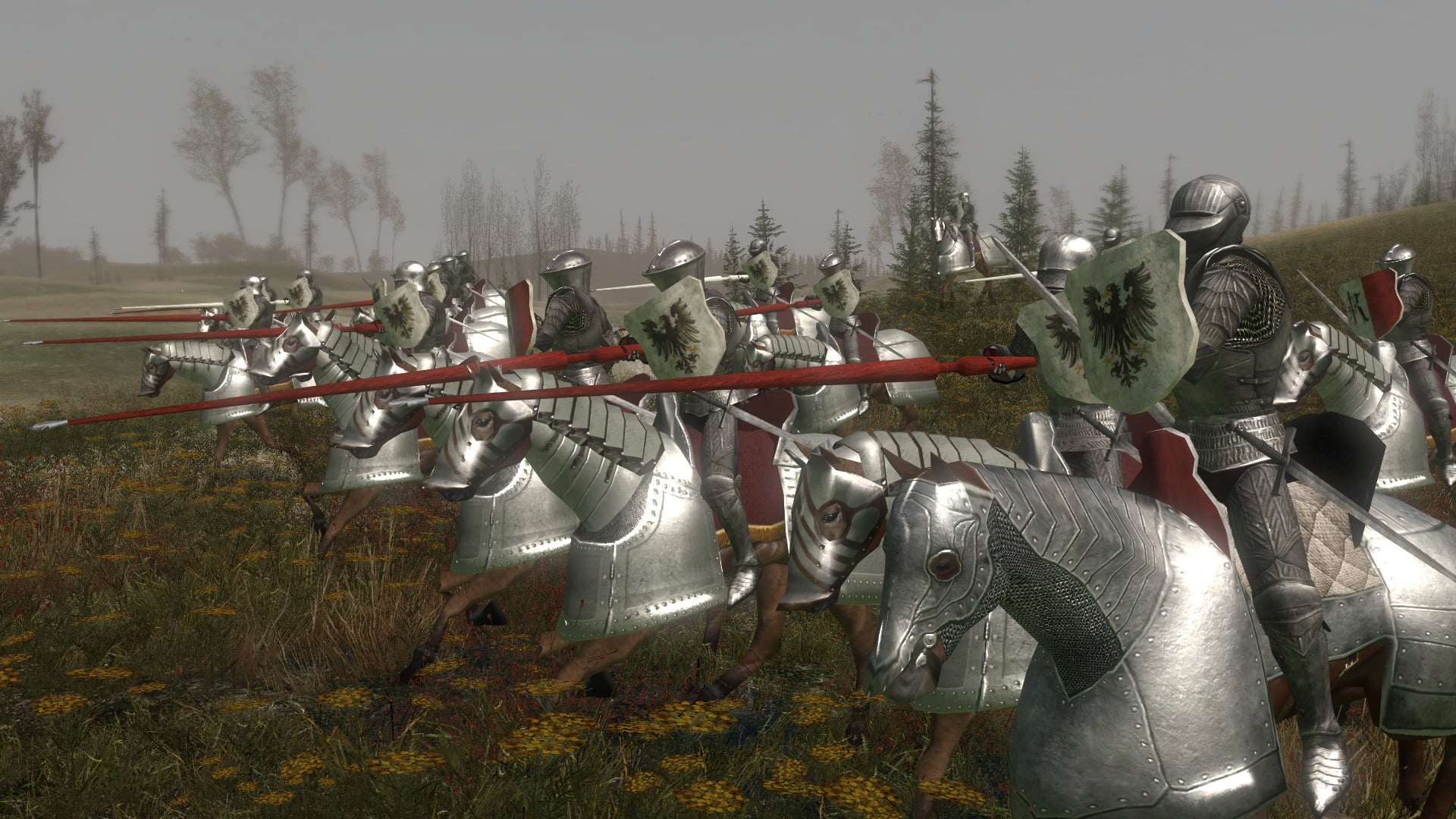
Saddle Up, Medieval Style
Mount and Blade: Warband—$19.99 (Steam)
On the surface Mount and Blade is a pseudo-medieval combat simulator. You lead a band of mercenaries around the world of Calradia – an analogue of Europe, Asia and the Middle East – serving the various rulers, indulging in looting and robbery, and invariably getting into fights. This combat is the core of the game, and the game does it very well: there’s something incredibly satisfying about leading a well-timed cavalry charge into your disorganised enemy’s flank. But there’s a lot more to Mount and Blade. The game provides some interesting takes on medieval politics, society and economics and ultimately lets you establish and manage your own kingdom. Keep an eye out for the long-awaited sequel Mount and Blade II: Bannerlord due out next March. But in the meantime, this is a present for someone looking for more from their hack and slash. There’s also the spin-off Mount and Blade: Viking Conquest for those who prefer their medievalism to have clearer roots in reality.
—Rob Houghton, Games Editor

Something for a Cold Night
Castellan Mead—$24 (Orchid Cellar Meadery & Winery)
Like all craft brewing, mead-making is having a bit of a moment. No longer is mead relegated to the sickly-sweet stuff you’ll get at Renn Fest (though, to be fair, there is definitely a time and a place)—nowadays if you know where to look you can find meads to suit just about any palate. And while you can still get mass-produced bottles of Chaucer’s Mead from your local wine shop, to get the really good stuff, you’ve got to go local.
Orchid Cellar Meadery & Winery is owned and operated in Middletown, Maryland by a family of Polish immigrants who have brought their taste for the honey wine, and their recipes, from their home country. The medieval origin—through centuries of riffing, remixing, and refining, of course—of their varieties is evident in their varieties’ names: “Archer” is a classic, with Cinnamon, Clove, and Juniper; their “Monk” is attributed to the Bernadine Cistercian monks (and is flavored with rose petals), and their “Scribe” is mixed with cherries. But they are not bound entirely by tradition: their “Hunter” series is not for the feint of heart—it’s got chili peppers in it.
If you’re up for experimenting with mead and not in the east coast, google around a bit. You’ll probably find someone making some excellent stuff. And if not, you could always make your own…
—Paul B. Sturtevant, Editor-in-Chief
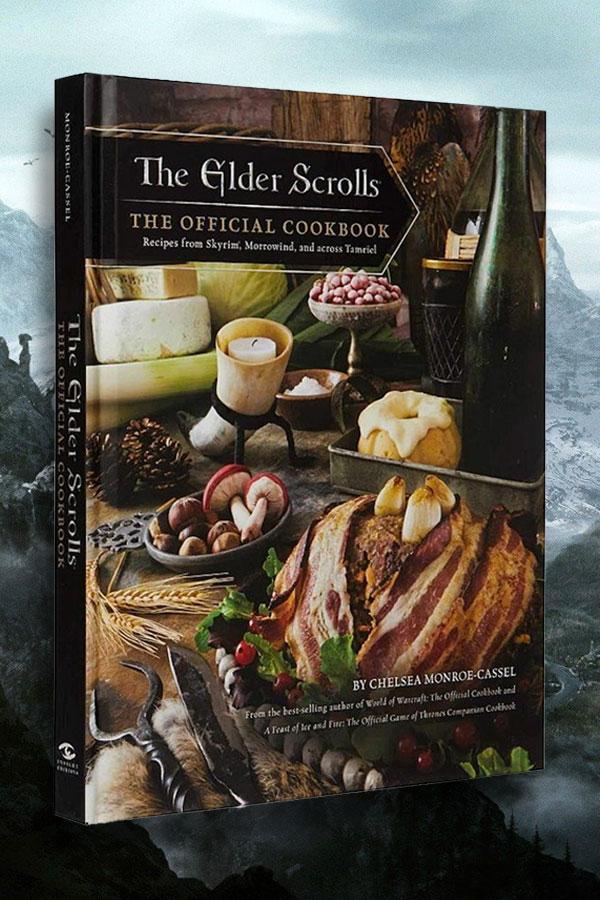
Come on In. Just Stoked the Fire.
The Elder Scrolls: The Official Cookbook—$35 (Bethesda)
The Elder Scrolls is a beloved series of neomedieval video games, and food plays a prominent part in both alchemy and healing (as well as in the snarky remarks from guards—why, yes, Whiterun Guard #47, someone did steal my sweetroll). Now Bethesda has released a cookbook so you can replicate some of the foods found across Tamriel, from Argonian Shrimp Boil to Black-Briar Mead. You know, instead of attempting to raise your health, stamina, or magicka by eating a cabbage whole. The cookbook includes some beautiful photography of the finished foods, as well as bits of lore to place each item in its in-game context.
(And, of course, if you’d rather go more scifi apocalypse than neomedieval fantasy, they also have a Fallout cookbook.)
—Shiloh Carroll, Managing Editor
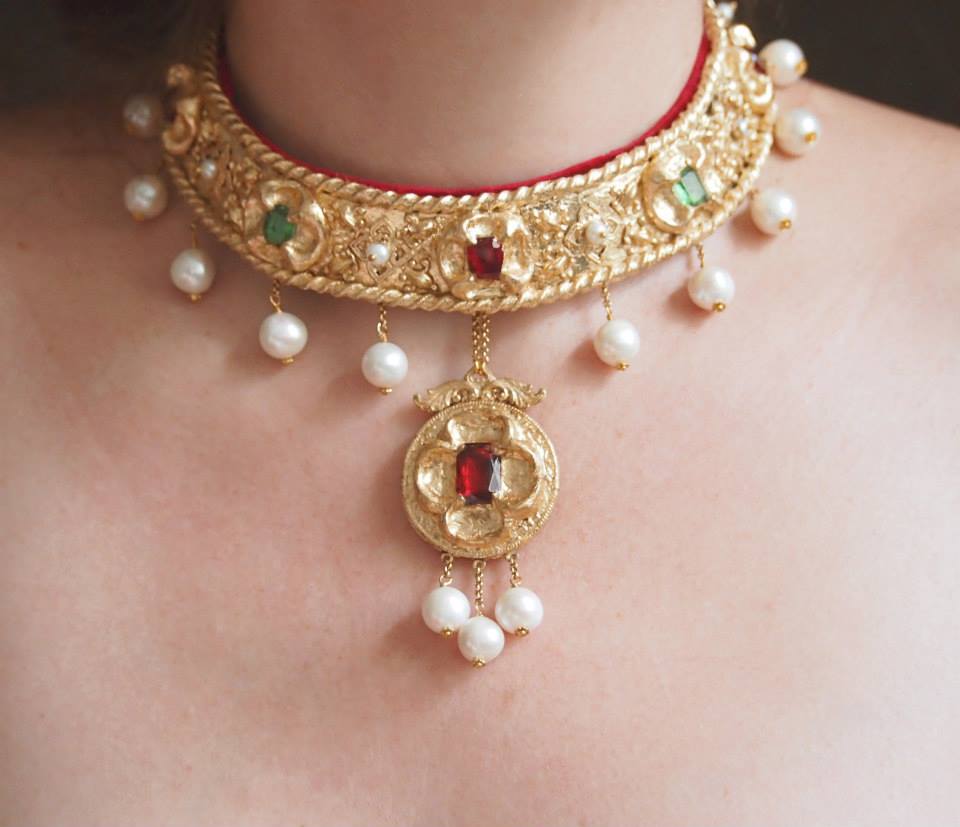
It Belongs in a Museum!
16th century German necklace—by commission (Eva Johanna Studios)
Do you look at medieval portraits and want their jewelry? Eva Johanna Studios has all the fancy jewelry you can imagine. How about a copy of a Renaissance necklace or perhaps something for the cat in your life? And who doesn’t need this pendant? (I do. I definitely do.) You can also order your own design. Many of these pieces of jewelry are made by creatively recycling old broken jewelry, not to mention other things – the broken china jewelry is how the Victorians imagined the Gothic era (Hermes as rabbit, anyone?). Contact the artist on Facebook for prices. Not cheap, but all pieces are unique.
—Kristina Hildebrand, Assistant Editor
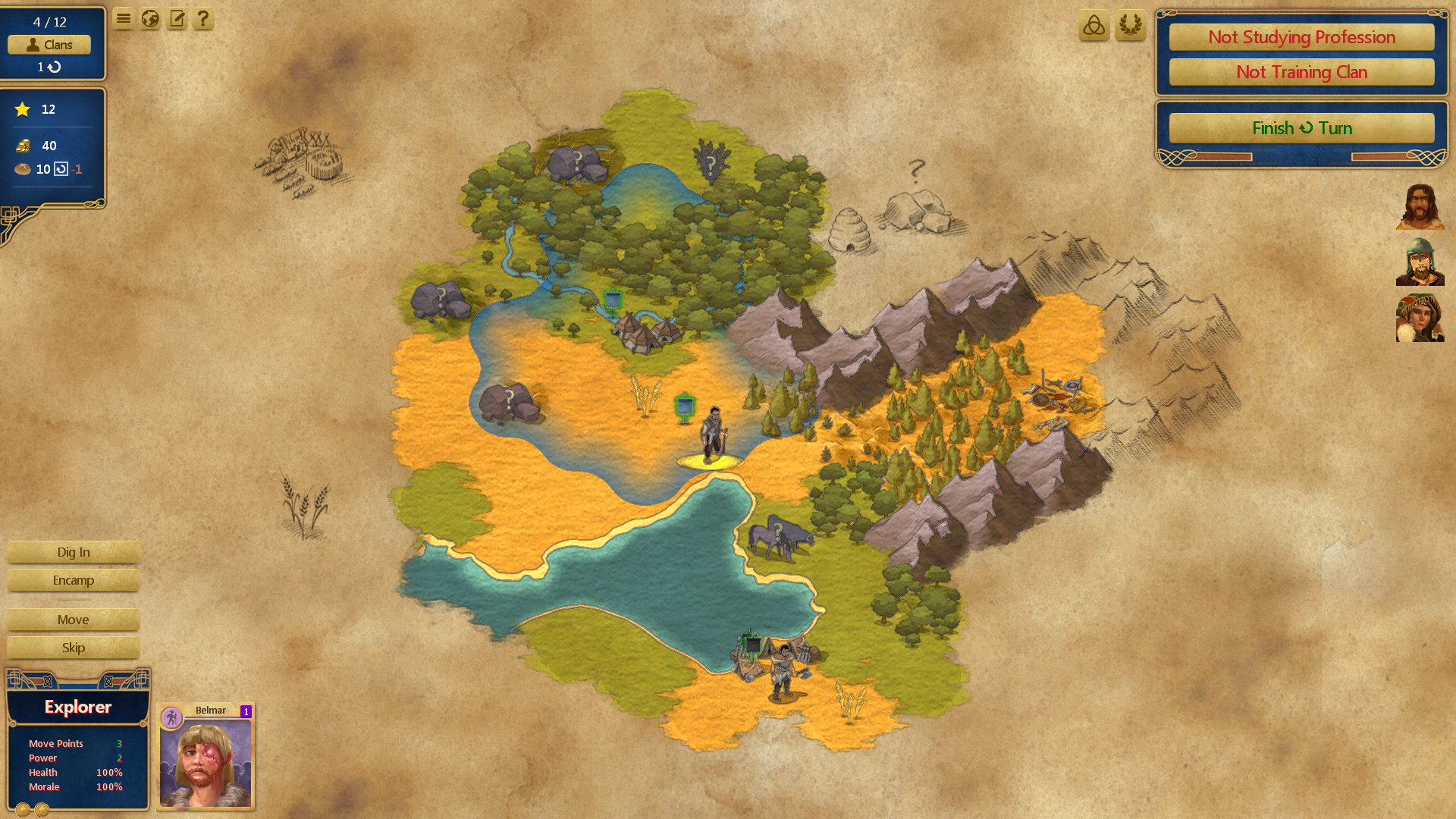
Rome Wasn’t Burnt in a Day
At the Gates—$29.99 (Steam)
I’m contractually obliged to include at least one intricately complicated grand strategy game in these lists. Unsurprisingly, I’ve got my eye on the forthcoming Crusader Kings III due out next year. But in the meantime, At the Gates is an interesting subversion of the standard strategy game formula. On the surface, this game looks a lot like the Civilization series (it’s creator Jon Shafer was the design lead on Civ 5). But while in Civilization you build an empire, At the Gates has you tear one down. You play as the leader of a barbarian tribe, just as the Roman Empire starts to crumble in on itself. Restricted to a single settlement, you’re very much the minnow to the Roman shark. Instead of commanding vast legions and burgeoning economies, you’re left to deal with neighbouring tribes, grumbling clans, food shortages, and a dynamic weather cycle. There’s a nice level of role playing and personal diplomacy to enjoy as you avoid kicking the Roman hornets’ nest. It can be an unforgiving experience, but is definitely something of interest for gamers looking for an unusual challenge.
—Rob Houghton, Games Editor
If you enjoyed that article, please share it with your history-loving friends on Facebook, or on Twitter! And be sure to subscribe here to receive every new article from The Public Medievalist the moment it launches.

